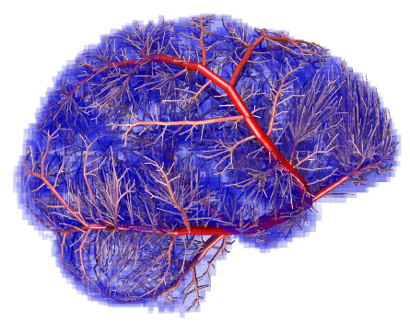New algorithm to model blood supply to the brain

A new algorithm has been developed by OU physicists which will make it possible to model the supply of blood to the brain.
In a paper, due to be published in Physics in Medicine and Biology on Thursday 20 June, Drs Jim Hague and Jonathan Keelan, from the OU’s Faculty of Science, Technology, Engineering and Mathematics, describe how, in collaboration with the University of Leicester, they used a physics-based method to develop a new model for understanding the blood supply to the brain. The method searches for the arrangement of blood vessels for which the energy needed to pump blood is lowest, a bit like running evolution very fast in a computer.
“Anyone who wants to make detailed calculations involving the arteries of the brain can use the model, which has been created using a computational design technique,” said Dr Hague. “It has a stunning level of detail compared with existing computer designed models and the design technique takes account of all the arteries of the brain simultaneously leading to realistic arrangements of blood vessels. Similar computational design methods can be used to model supply to other organs.”
A mid-term application of the new model is predicting patients’ risk of developing a stroke after cardiac surgery and in the longer term, Dr Hague sees the algorithm as a means to design blood vessels for artificial tissue, to enable larger tissues such as organs to be grown for transplant and to replace animal testing.
Read the paper: Development of a globally optimised model of the cerebral arteries
Quarterly Review of Research
Read our Quarterly Review of Research to learn about our latest quality academic output.

Contact our news team
For all out of hours enquiries, please telephone +44 (0)7901 515891
Contact detailsNews & articles

Research image of the month - flood resilience, community voices, and a panoramic perspective
This month’s research image of the month (June 2025) encapsulates Claude Nsobya’s research on how communities are leading the way in managing flood risk through local knowledge and natural solutions.